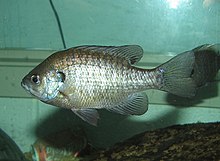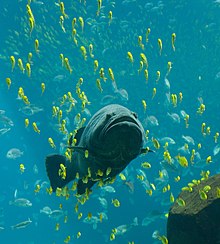ਜਾਨਵਰਾਂ ਵਿੱਚ ਲਿੰਗਕ ਪ੍ਰਵਿਰਤੀਆਂ
ਦਿੱਖ



ਜਾਨਵਰਾਂ ਵਿੱਚ ਲਿੰਗਕ ਪ੍ਰਵਿਰਤੀਆਂ ਵੱਖੋ-ਵੱਖ ਹੋ ਸਕਦੀਆਂ ਹਨ ਭਾਵੇਂ ਉਹ ਜਾਨਵਰ ਇੱਕ ਹੋ ਪ੍ਰਜਾਤੀ ਦੇ ਹੋਣ। ਆਮ ਸੰਭੋਗ ਜਾਂ ਪ੍ਰਜਨਨ ਲਈ ਜਾਨਵਰ ਜਿਹਨਾਂ ਲਈ ਉਹ ਮੋਨੋਗੈਮੀ, ਪੋਲੀਐਂਡਰੀ, ਪੋਲੀਗੈਮੀ ਅਤੇ ਪਰੋਮੀਸਕੁਟੀ ਦਾ ਸਹਾਰਾ ਲੈਂਦੇ ਹਨ। ਹੋਰ ਲਿੰਗਕ ਪ੍ਰਵਿਰਤੀਆਂ ਵਜੋਂ ਉਹ ਅੰਤਰ-ਵਿਸ਼ੇਸ਼ ਲਿੰਗਕ ਪ੍ਰਵਿਰਤੀ, ਮਰੇ ਹੋਏ ਜਾਨਵਰਾਂ ਨਾਲ ਕਾਮ ਪੂਰਤੀ, ਸਮਲਿੰਗਕਤਾ, ਦੁਲਿੰਗਕਤਾ ਅਤੇ ਹੋਰ ਕਈ ਲਿੰਗਕ ਹੋਂਦਾਂ ਰੱਖਦੇ ਹਨ।
ਮੇਟੀਂਗ ਪ੍ਰਬੰਧ
[ਸੋਧੋ]| The four basic mating systems[1]:160–161[2] | ||
|---|---|---|
| Single female | Multiple females | |
| Single male | Monogamy | Polygyny |
| Multiple males | Polyandry | Polygynandry |
Monogamy
[ਸੋਧੋ]Polygyny
[ਸੋਧੋ]Polyandry
[ਸੋਧੋ]
Polygynandry
[ਸੋਧੋ]Polygamy
[ਸੋਧੋ]Parental investment and reproductive success
[ਸੋਧੋ]
Seasonality
[ਸੋਧੋ]
Mammals
[ਸੋਧੋ]Amphibians
[ਸੋਧੋ]Fish
[ਸੋਧੋ]Motivation
[ਸੋਧੋ]Neurohormones in the mating systems of voles
[ਸੋਧੋ]Oxytocin and rat sexual behaviour
[ਸੋਧੋ]Oxytocin and primate sexual behaviour
[ਸੋਧੋ]Pleasure
[ਸੋਧੋ]Koinophilia
[ਸੋਧੋ]Interpretation bias
[ਸੋਧੋ]Types of sexual behaviour
[ਸੋਧੋ]Reproductive sexual behaviour
[ਸੋਧੋ]Cuckoldry
[ਸੋਧੋ]
Hermaphroditism
[ਸੋਧੋ]
Sexual cannibalism
[ਸੋਧੋ]References
[ਸੋਧੋ]- ↑ Moyle PB and Cech JJ (2004) Fishes, An Introduction to Ichthyology. 5th Ed, Benjamin Cummings.
- ↑ Berglund A (1997) "Mating systems and sex allocation" Pages 237–265 in JJ Godon, ed.
